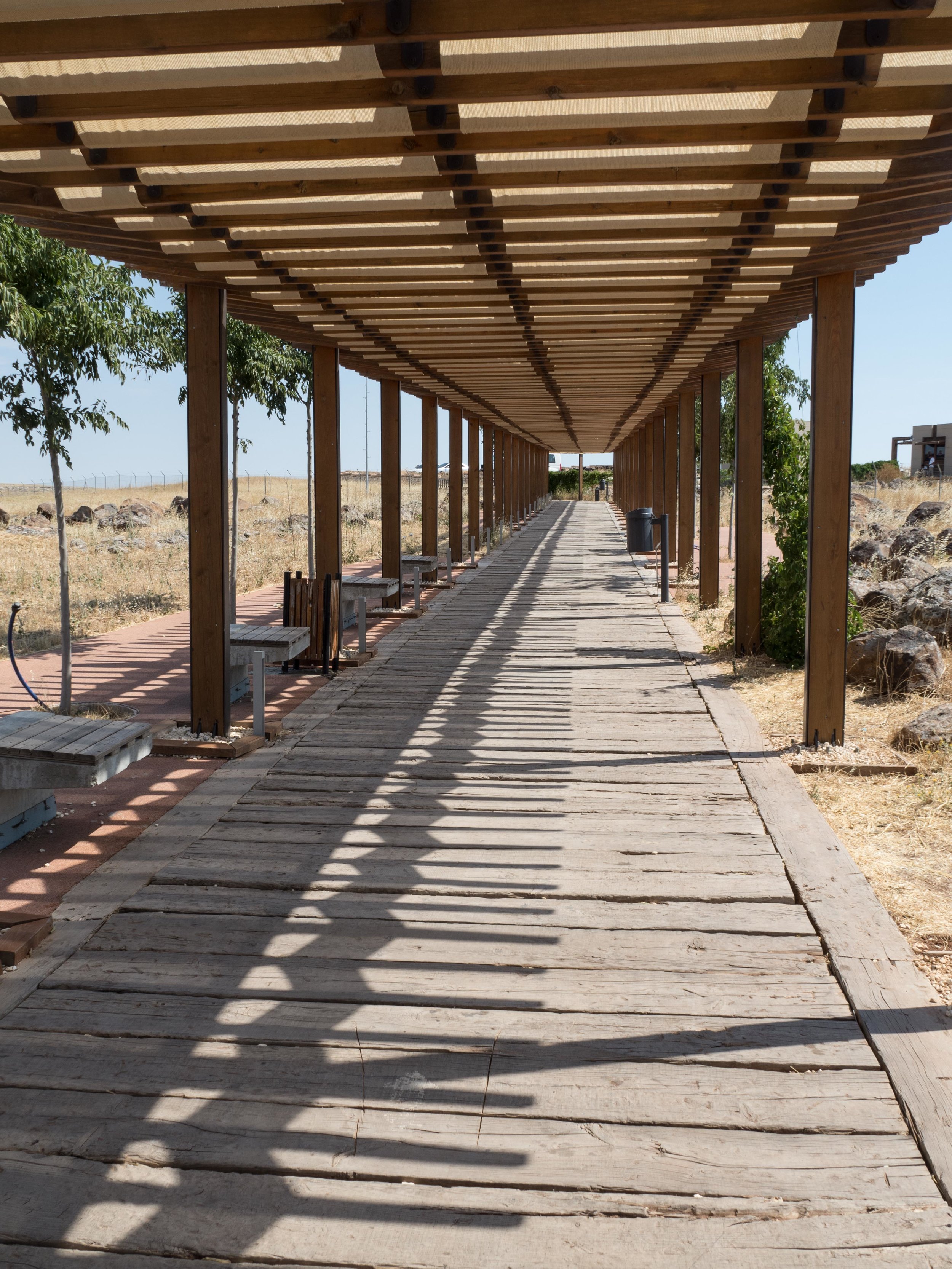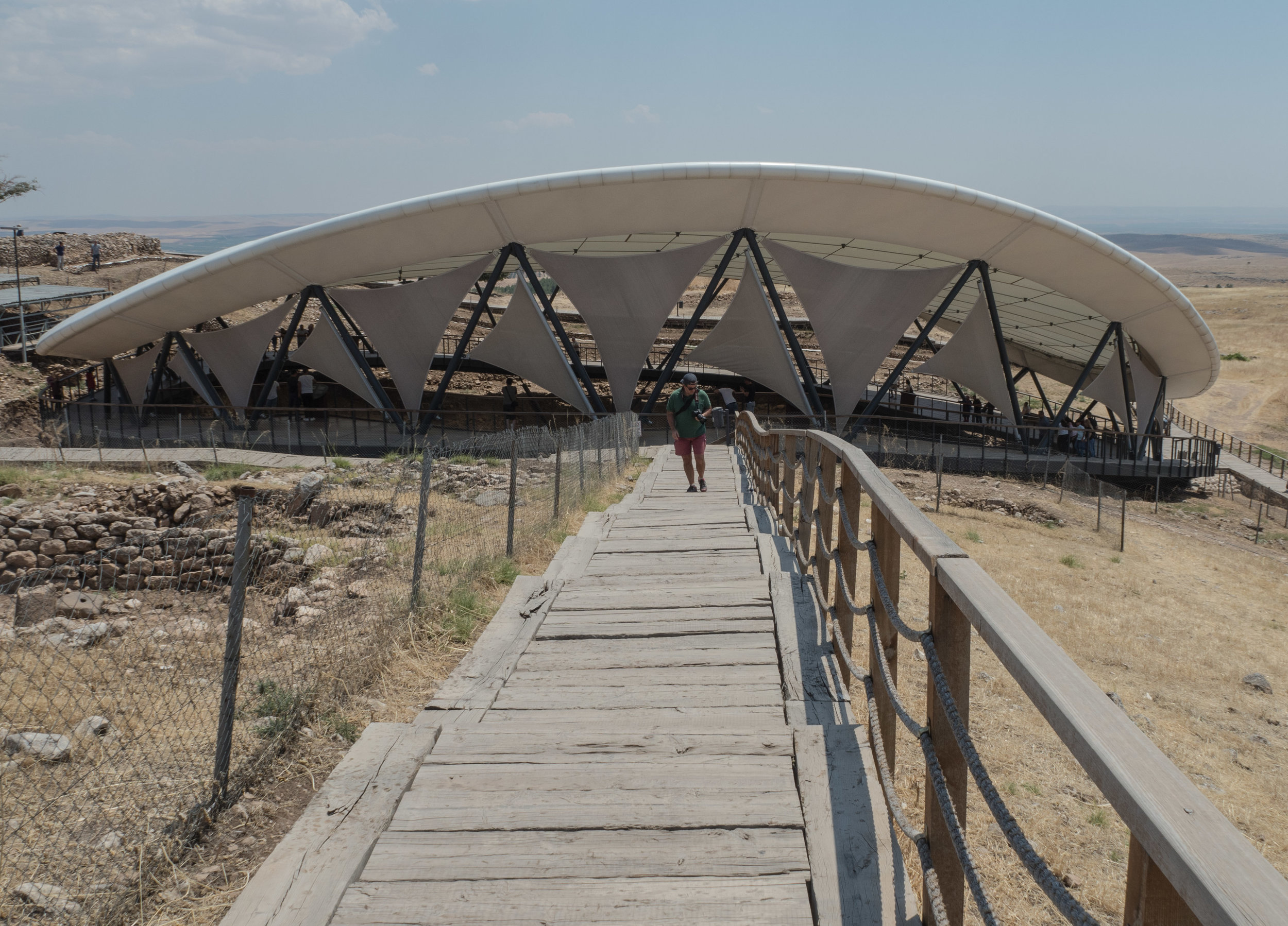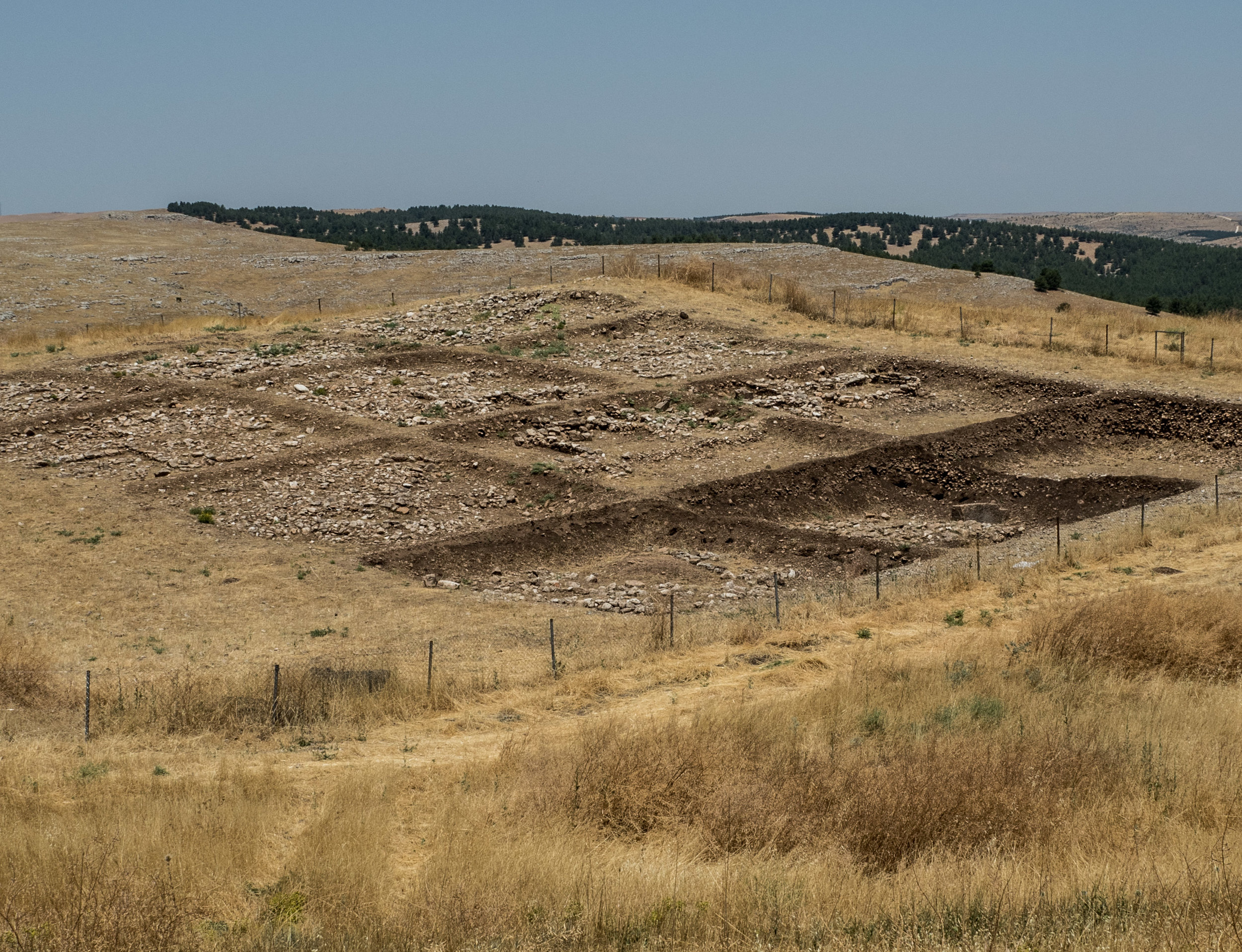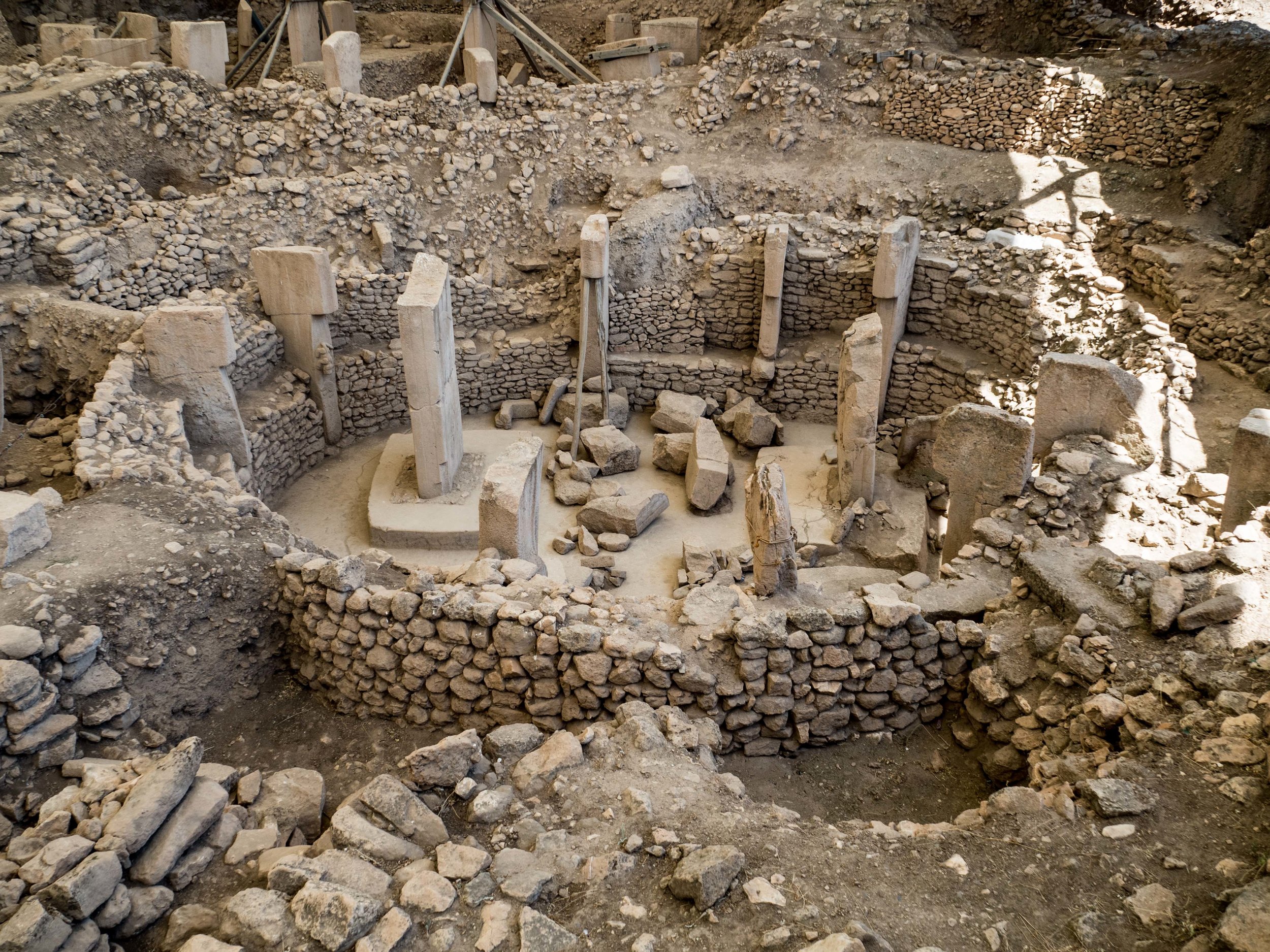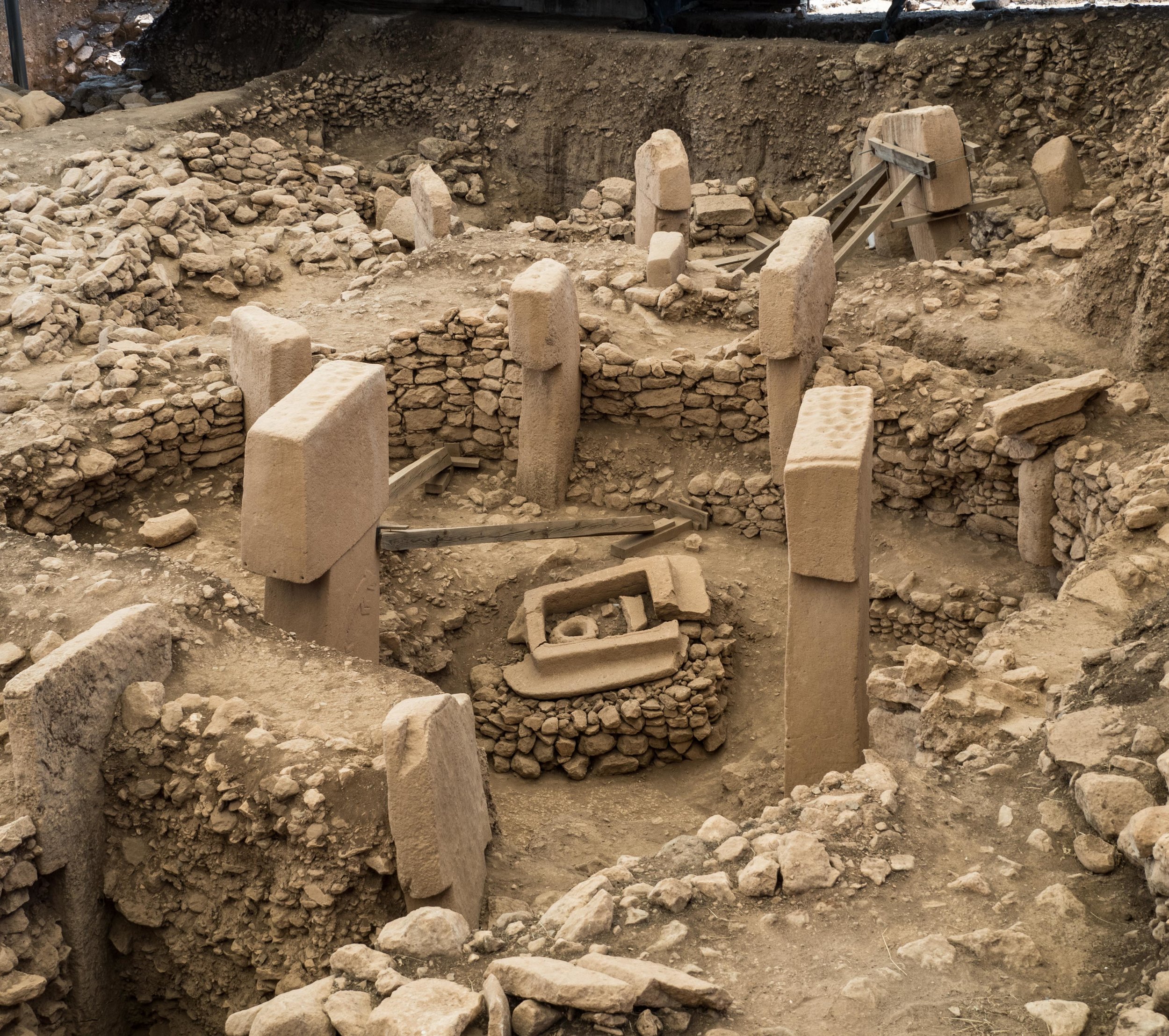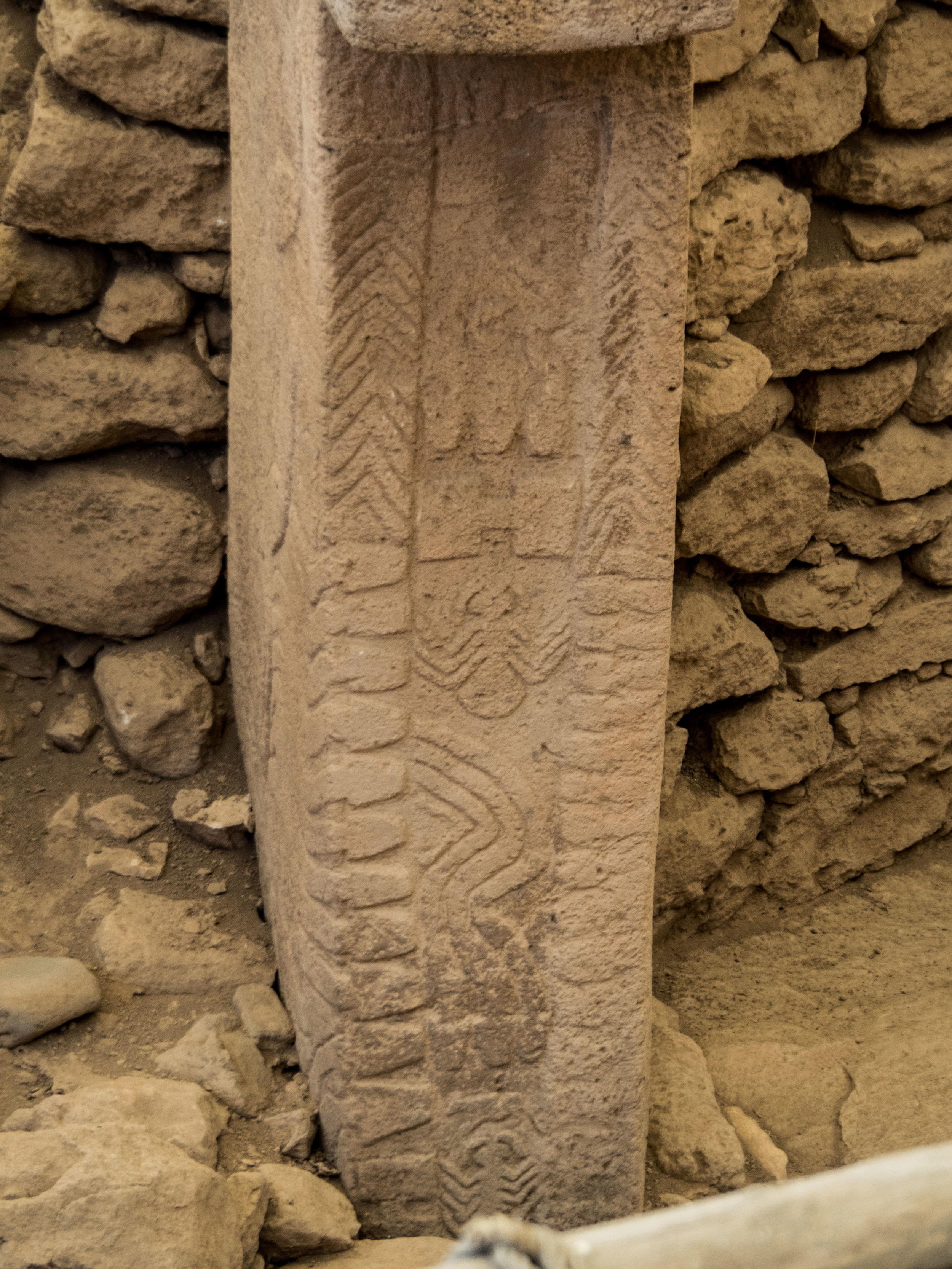It’s not like Sanliurfa is not a great old town with a fantastic museum, some old mosques and some great religious associations, but that is not why most foreigners decide to come here. It is the nearby archaeological site Göbekli Tepe (GP) which has made headlines since 1995.
It had been discovered much earlier; during the 60’s, I believe, and an American team was part of that discovery. But they failed to recognize the absolutely unique importance and the extent of this site. That fell to the German archaeologist Klaus Schmidt, whose life’s work it became to excavate and interpret GT. He died recently in 2015, of heart failure while swimming in Germany; so I am told. What a shame! Had I just come here 7 years ago during my last trip to Turkey - which I was seriously contemplating - I could have still met him. But I was here in February and the nearby site of Mount Nemrut - a MUST SEE - was still covered in snow and ice and closed to visitors. I did not want to make this far of a trip for just one of these two sites on my bucket list… But now it’s too late.
Excavations on the site are still ongoing, but under new leadership. Only 4 of 16 suspected and mapped out stone circles have been unearthed. You can and should read up about this site in much more detail online. But in short: this site predates the pyramids of Egypt and the ziggurats of Mesopotamia by 6-7000 years! It predates any monumental architecture and any human settlement ever discovered by 1-3000 years. And most importantly, it questions our long-held assumption that the discovery of farming lead to settlements in the first place. That is a big one!
It proposes the theory instead, that people were in need of rituals and sites of worship and formed communities to build sites like GP which in turn, required organization, funding, and feeding of a large work crew. And therefore, so this theory argues, man developed farming and settled to accommodate those needs. How interesting! In other words: religion first. This is a good sell for archaeological funding and government support in a by and large increasingly religious country such as Turkey.
2019 was declared the “Year of Göbekli Tepe” by the Turkish Government. They seem to pick one of their somewhat under-appreciated tourist sites and promote it nationwide, every year. A brand new visitor center and a nearby circular exhibition hall had just opened. GT is advertised all over town and Turkish media. A good number of people were there, but still, this is a remote area and probably won’t become part of mainstream foreign travel soon. One indicator of this is that the parking lot was full of private cars rather than large tour buses as in Troy.
It was as hot as Masud had predicted. 100 degrees in the shade felt like 120 in the open sun. The minute I got out of the car I felt like I was melting away. The canvas cover over the main excavation area only does so much, but it is a welcome defense against the worst. The archaeological site is reached via a little shuttle bus and is about 1 km away from the air-conditioned visitor center and the exhibition hall.
The exhibition hall had some good time lines and a few useful objects on display, but the center of the display was a nerve-wrecking, disco-style, loud sound track, providing the backdrop to a circular hall which displayed an all-round, floor to ceiling new-age type, fast-paced reinactment (?) interpretation (?) of the development from the primitive worshipping prehistoric era to the new, scientific, yet spiritual current times. Or was there anything else to be gained from it? There was no text, just a fast paced throw of stylized images, and iconic symbols to make the point. The repetitive and loud music drowned out any thought and the whole display had zero educational value as fas as I am concerned. But it seemed to feed into this propaganda thought: see, how important religion is? And Turkey is the birthplace of it all! But then, perhaps, I am making too much of it. I wonder what Klaus Schmidt would have said about this.
After I had run the cycle of this overbearing music about 5 or 6 times, I could not stand it any longer and headed out to the shuttle. A board walk circles around the entire area that is open to the public. The main attraction - and if you are in a hurry all you really need to see - is the canvas-covered area of four excavated stone circles filled with monoliths of varying size and shape. The degree of preservation varies, too, but a typical pattern emerges: Two big “god” monoliths face each other in the circle. There is a space for worshippers, or dancers perhaps, around these two stones and the room - most likely roofed at one point - has a set of smaller monoliths set into the walls at certain intervals.
Many of these stones had a variety of bas reliefs of various stylized animals carved into them: foxes, birds, a scorpion and more. One, the most elaborate of those reliefs shows a humanoid creature perhaps with a severed head? I am sure someone has already interpreted and written about it all, and decided what it is. These details were hard to make out on those stones as they lacked the shading and the contrast in this bright day light. And you are quite a distance from these rocks as you circle the site on a ramp. This setup reminded me of Xian, where the warriors in the pit are further away from you than would be desirable and than would be possible in a museum display.
I enjoyed the opportunity at the Sanliurfa Museum to complement this visit by seeing dozens of excavated 3 dimensional animals and heads from the site and to be able to actually walk into one of the stone circles that has been set up there as a 1:1 model. Only there, did I realize that the two center stones are interpreted as god-figures. As stylized as they are, what seemed to be nonsensical boomerang shapes on the sides of those stones, turned out to be arms, ending in a hand with slim fingers touching his or her belly, sort of.
The rest of the GT board walks leads the visitors upward into an area actively still under excavation and past two more outlying circles that are much smaller and less preserved. The views into the rolling, barren landscapes are wonderful. To contemplate that man discovered here how to turn wild grains into farm lands and to be willing to spend hundreds and thousands of man hours to thank the gods for it - or to petition them perhaps, is truly mind-boggling. I am so glad, I had a chance to see this site for myself. I might have to abandon teaching prehistory via French cave sites and Stonehenge… And isn’t this, what it is all about: Rethinking our own preconceived notions and opening up to new thoughts and ideas.
A thought to ponder.
Disclaimer: The circles were labeled so confusingly, that I do not guarantee that B is B and C is C… I will see if I can verify this.

